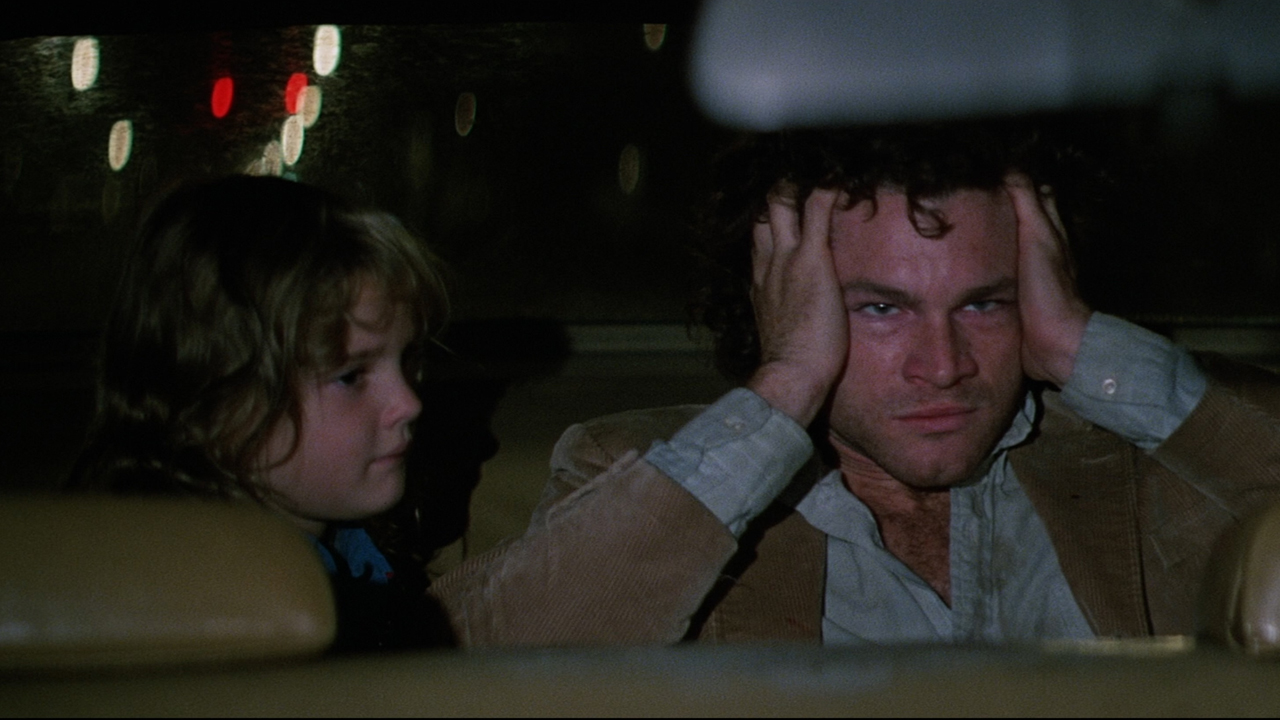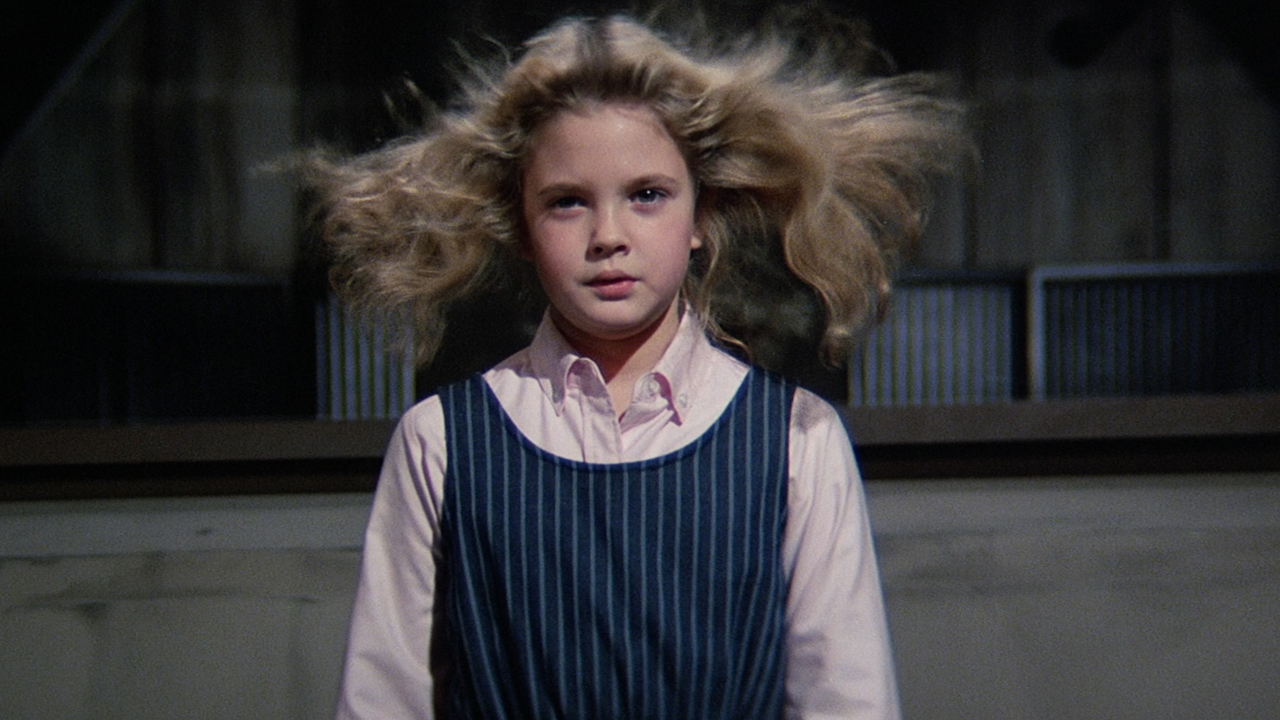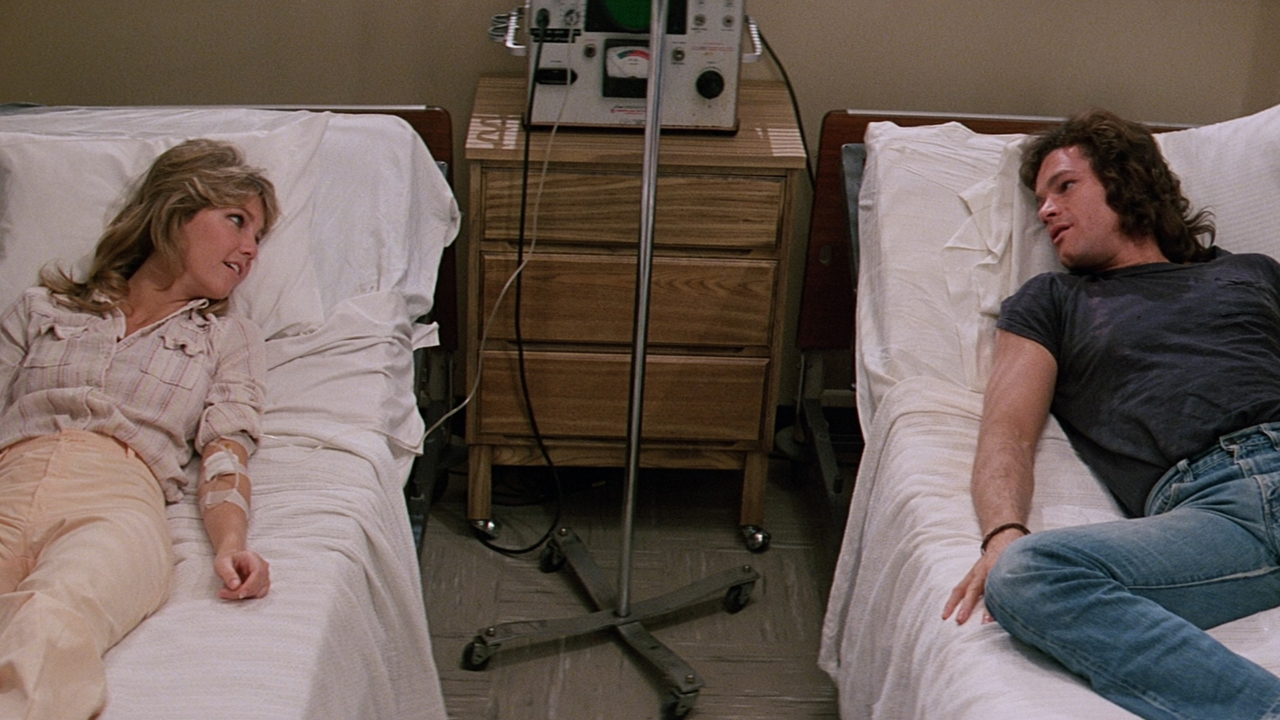Adapting Stephen King's Firestarter: Does The 1984 Drew Barrymore Movie Still Have Heat?

As I noted a few weeks ago in my column about David Cronenberg’s The Dead Zone, the end of the 1970s was a difficult time for Stephen King. The author experienced a good deal of strife in the writing and release of The Stand, including more than a little head-butting with his publishers at Doubleday, and it created some issues for him creatively. The Dead Zone was not a book that flowed out of him, and to help himself get around the jam he worked on other projects. Two of them, Welcome To Clearwater and The Corner, were ultimately abandoned, but another book he started at that time was Firestarter. It too had its trials and tribulations, the standout being King’s questioning of whether or not he was just rewriting Carrie, but he persisted, and when he came back to it after publishing The Dead Zone he recognized it as being not only being different from the story of Carrie White, but better.
Considering this, it’s fitting that the process of bringing Firestarter to the big screen wasn’t precisely easy either. Originally it was supposed to be director John Carpenter who told the story of young Charlie McGee on the big screen (this being before Christine was even a book let alone a movie), but it was a project that quickly hit a brick wall. As adapted by screenwriter Bill Phillips, the film would have required Universal Pictures to pony up a $20 million budget – and while that investment was considered substantial all by itself, Carpenter was also coming off the tragic box office flop that was The Thing. Had the studio had a time machine, executives could have seen that the 1982 movie would become one of the most beloved horror titles of all time, but alas…
Enter director Mark L. Lester. The filmmaker, coming off the controversial Class of 1984, met with Universal and said that he could turn Firestarter into a movie for $10 million, and in May 1984 that vision arrived on the big screen (albeit about $5 million over budget). It’s a feature with a stellar cast, starring the likes of Drew Barrymore, George C. Scott, Martin Sheen, Freddie Jones, Art Carney, Heather Locklear, and Louise Fletcher, and it’s inarguably one of the most faithful King films that have been made – but how does it stack up both as an adaptation and a cinematic experience now that it’s nearing its 40th anniversary, especially with a remake is on the list of upcoming Stephen King movies? That’s the focus of this week’s Adapting Stephen King.

What Firestarter Is About
I’d venture a guess that a majority of science-fiction/fantasy fans have at one point or another had their interest piqued by stories of spontaneous combustion. After all, it is fascinating: the idea that an individual could at some point, and for no discernable reason, burst into flames. It’s a scary concept – so it should be of little surprise that it was one that got caught in the spider web of Stephen King’s mind as he was doing research into paranormal phenomena. What could cause somebody to suddenly start burning? Could it be the will of someone with the ability to control fire with their mind?
This, according to Bev Vincent’s essay “A Pleasure To Burn,” then led the author to consider the LSD trials that were conducted in the 1950s. Government-led and funded operations such as Project ARTICHOKE and Project MK-Ultra examined the potential for the psychoactive drug to be used in interrogation and for mind control, and while those programs didn’t result in the creation of any legitimate psychics (that we know about), Stephen King pondered what would happen if they did.
The ideas coalesced to set the stage for Firestarter and the meeting of Vicky Tomlinson and Andy McGee – a pair of college kids who are looking to make some fast cash by participating in a study run by a psychology professor/behaviorist named Dr. Wanless (who is secretly working for the Department of Scientific Intelligence a.k.a. The Shop). As part of an assemblage of 12 volunteers, they are given an experimental drug called Lot Six, and though many of the subjects experience violent reactions to the chemical compound, both Vicky and Andy individually wind up gaining psychic abilities. She develops the capacity to read people’s thoughts, and with enough concentration he can alter a person’s perception (what he calls a “push”).
Because of the horrific outcome of the trial, future testing of Lot Six is shut down, and Andy and Vicky are put under regular surveillance. Living generally normal lives, they become involved romantically and after getting married have a daughter named Charlene – and they are shocked to discover that their altered genetics have led to their child having arguably the most dangerous psychic ability of all: pyrokinesis (a word that may or may not have originated with the creation and promotion of Firestarter).
Your Daily Blend of Entertainment News
When Charlie McGee turns seven, her powers continuing to get stronger and stronger, The Shop, led by Captain James Hollister, decides that it is time to bring her in for study. Andy and Charlie are forced to go on the run after Vicky is killed by government operatives, and circumstances become exponentially more dangerous when the agency’s desperation leads Hollister to employ ruthless mercenary John Rainbird to assist in the abduction.

How Mark L. Lester’s Firestarter Differs From Stephen King’s Book
According to Mark L. Lester in the documentary Playing With Fire: The Making of Firestarter, the version the movie that John Carpenter was originally planning to make diverged quite heavily from the source material – but that wasn’t the movie that Lester wanted to make. As such, when he began to work with screenwriter Stanley Mann in the development of the script, his move was to essentially rewrite the novel as a screenplay. Producer Dino De Laurentiis was taken aback by this decision, but the director explained it to him simply: de Laurentiis spent $1 million purchasing the rights to the book, so why not use it to the fullest possible extent?
Because of this, as mentioned above, 1984’s Firestarter remains one of the most faithful adaptations of Stephen King’s works. The overwhelming majority of the film’s scenes are taken directly from the pages of the book, and that even includes key dialogue. All of the vital material, including just about everything with Charlie (Drew Barrymore), is brought to the big screen. But, to use a baseball metaphor, it doesn’t quite manage to pitch a perfect game. There is some material that had to be left out of the feature, and the vast majority of it has to deal with Andy (David Keith), his powers, and the years he spent using his gifts before being forced to go on the run with his daughter.
If Andy were a terrible person, he could easily use his mind-control powers in nefarious ways, such as exploiting it to gain money and power, but that’s not who he is. Stephen King’s book instead takes him in the exact opposite direction: he uses his “push” to help others. In the years after the Lot Six trial, which is material not featured in the adaptation, the character makes a living by starting his own motivational programs – helping people lose weight and gain professional confidence. He wouldn’t actually tell any of his clients what he could do, or the truth about what he was really doing to them, but he is said to be effective in helping change lives.
Of course, this is a Stephen King story, so there is a dark side to this… and it is exceptionally dark. While most of the people who go to see Andy get the help they need, for some, the “treatment” doesn’t quite take. Instead of gaining confidence or losing weight, these individuals find themselves with a single idea ricocheting inside their minds. The final results differ in each case, but psychosis is always on the menu.
The most significant example of this horrific echo in Firestarter is a part of a relationship that Andy develops with a psychiatrist at The Shop named Dr. Pynchot. While planning his escape, the father/psychic purposefully sets off a ricochet in Pynchot’s head that eventually gets him to obsess about his wife’s new garbage disposal… and then stick his entire arm in it.
Cutting this material for the film has the effect of making Charlie stand out as the true protagonist of Firestarter – which she absolutely is – but at the same time it’s material that adds a lot more to Andy as a character, and it’s too bad that the movie couldn’t find any kind of way to include or even just reference it.

Is It Worthy Of The King?
For any Constant Reader, faithfulness is going to count for a lot when it comes to Stephen King adaptations. The author’s stories are so rich in detail that they invite the creation of a live-action version in one’s imagination while one reads, and it’s a reasonable desire to see that imagined version brought into reality without excessive changes or compromises. It’s admittedly a major factor in my considerations when writing this recurring segment in this column.
In that respect, Mark L. Lester’s Firestarter earns tremendous good will. The director made an argument for his specific audience when he convinced Dino De Laurentiis that making a direct adaptation of Stephen King’s book was the right way to go with the project, but his methodology also demonstrates respect for the cinematic qualities of the writer’s story and storytelling (As noted by Douglas E. Winter in 1984’s Stephen King: The Art Of Darkness, the script was, at least for a time, viewed as King’s “favorite”). Pulled from the original structure, the feature is half chase movie and half escape movie, and that narrative has a great flow across a 114 minute runtime, with an awesome ensemble of talented actors playing all of the key characters.
Firestarter can also aptly be described as an “on paper” film. Any Stephen King fan who learns about the project’s loyalty to the book is going to be excited to watch, and Dino De Laurentiis’ whole push for big name stars was an attempt at giving the production a surprise layer of prestige. But, if I may be so bold as to use a clunky-but-on-theme metaphor, it’s an adaptation that smolders more than it broils. As strong as the narrative is, the overall execution is flat – from the cinematography, to the editing, to a number of the performances.
As he would further show later in his career making the Arnold Schwarzenegger film Commando, Mark L. Lester demonstrates a talent for shooting action in Firestarter’s biggest set pieces (which is really to say all of the scenes where Charlie uses her powers), and the production makes tremendous use of practical effects. The scenes where the girl tests her abilities in lab settings are exciting and fun (particularly thanks to the confidence from young Drew Barrymore), and the finale’s wanton destruction is really everything that you’re hoping that the film is building towards.
Where it fails to fully click is in the development of its characters – and that’s just a crucial and unignorable aspect when it comes to adapting the work of Stephen King. Strange as it is to say, the chemistry between David Keith and Drew Barrymore isn’t strong enough to create the proper emotional stakes in their complex father/daughter relationship, and it feels like the movie is leaning on the audience automatically accepting the love between a parent and their child. George C. Scott’s performance as John Rainbird has also aged dreadfully, not just because it’s a white actor playing a Native American, but also because he provides none of the killer, evil energy that the villain possesses in the novel. While at the very least Art Carney (as Irv Manders) and Freddie Jones (as Dr. Wanless) have fun with their respective roles, Scott sleepwalks in the film.
Of the early Stephen King adaptations, many of which rank as some of the best Stephen King movies, Firestarter is the one to go into with limited expectations. Just do yourself a favor and don’t try and imagine how a John Carpenter-directed version could be better. Like a good “push,” that will just lead the thought to ping-pong around your brain until madness sets in.

How To Watch Mark L. Lester’s Firestarter
If you now have a fire lit under you (sorry, I’ll stop) to either revisit Firestarter or check it out for the very first time, your options to do so are plentiful. On the streaming side of things, the Stephen King movie is now currently available on Cinemax Go – and provided you have an add-on subscription you can access it on Hulu or Amazon. You can rent or purchase it digitally from online retailers, but it also has some fantastic Blu-ray options available. The Collector’s Edition put out by Scream Factory is the best domestic release, but if you have a region-free player you may want to consider the disc put out by Plan B, which features a wonderful additional commentary track with horror historian Johnny Mains.
After sticking around in the movie world for the last six editions of this column, next week I will examine what was only the second small screen adaptation of a King story by taking a long hard look at the 1984 Tales From The Darkside episode “Word Processor Of The Gods.” It will be live here on CinemaBlend next Wednesday, and in the meantime click through the banners below to find all of my previous Adapting Stephen King installments.







Eric Eisenberg is the Assistant Managing Editor at CinemaBlend. After graduating Boston University and earning a bachelor’s degree in journalism, he took a part-time job as a staff writer for CinemaBlend, and after six months was offered the opportunity to move to Los Angeles and take on a newly created West Coast Editor position. Over a decade later, he's continuing to advance his interests and expertise. In addition to conducting filmmaker interviews and contributing to the news and feature content of the site, Eric also oversees the Movie Reviews section, writes the the weekend box office report (published Sundays), and is the site's resident Stephen King expert. He has two King-related columns.
